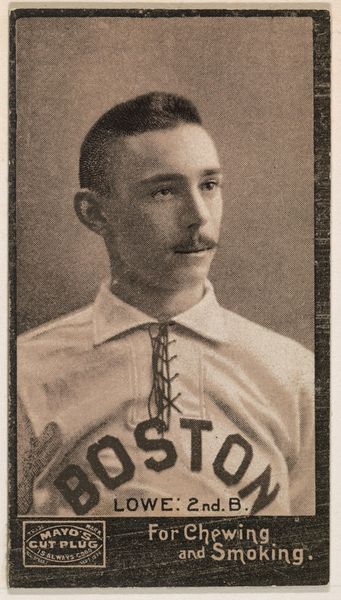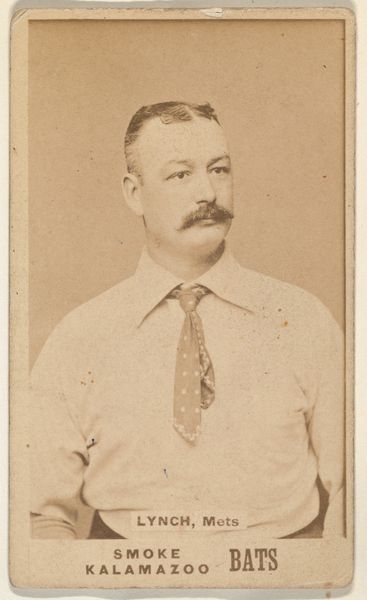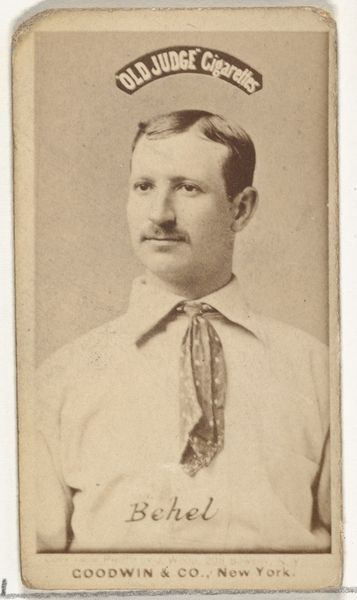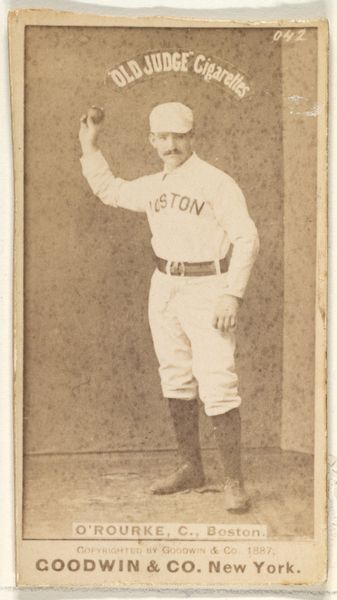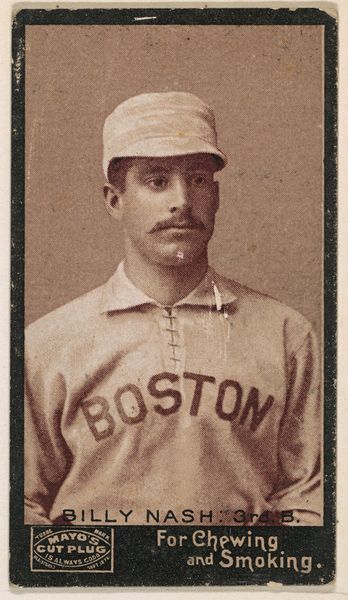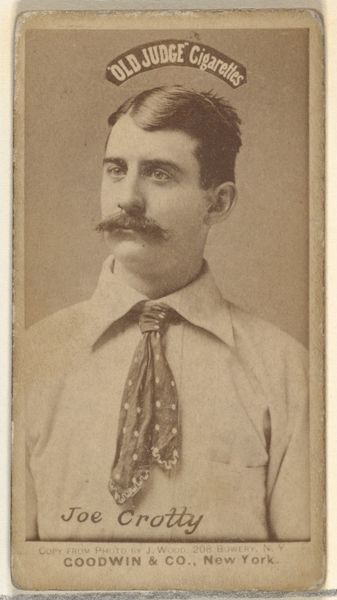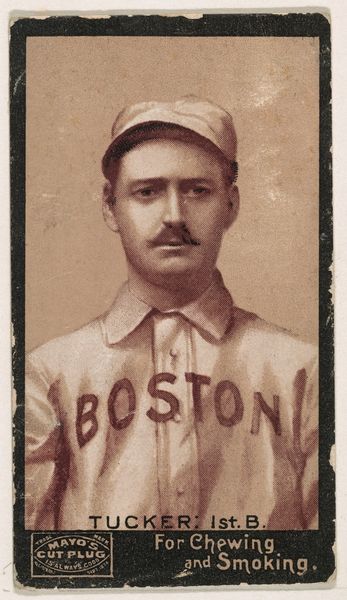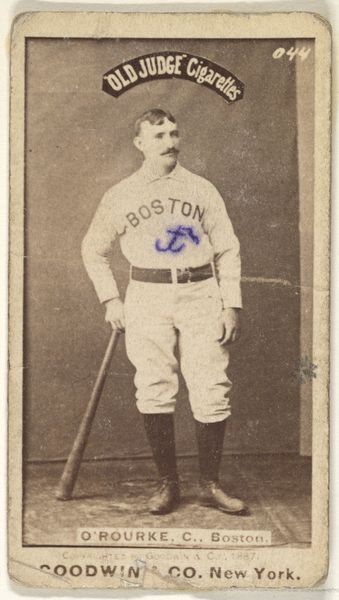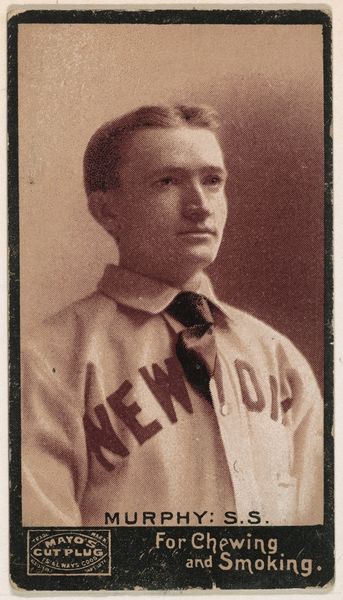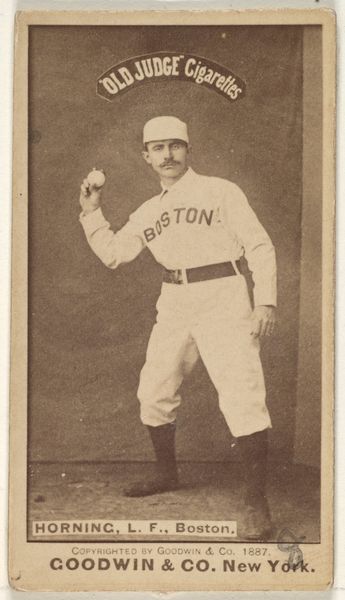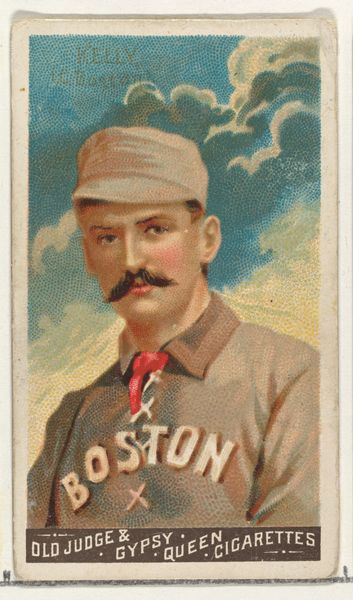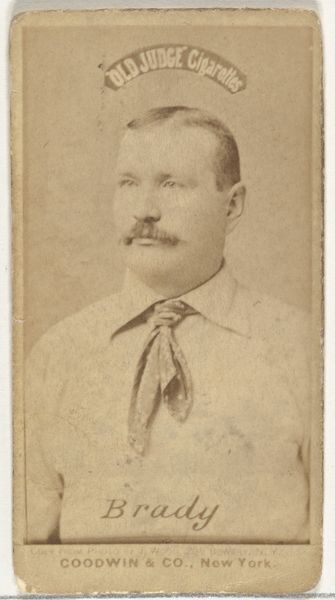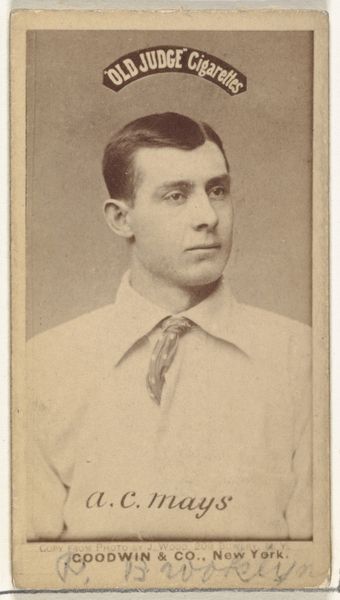
Wise, Shortstop, Boston, from the Old Judge series (N172) for Old Judge Cigarettes 1887
0:00
0:00
drawing, print, photography
#
portrait
#
drawing
# print
#
impressionism
#
baseball
#
photography
#
19th century
#
men
#
golden font
#
athlete
Dimensions: sheet: 2 11/16 x 1 3/8 in. (6.9 x 3.5 cm)
Copyright: Public Domain
Editor: This is "Wise, Shortstop, Boston," from the Old Judge series for Old Judge Cigarettes, made in 1887 by Goodwin & Company. It's a print, derived from photography, depicting a baseball player. It strikes me as a really early example of sports marketing. What's your take on it? Curator: I see it as a potent artifact embedded in a complex web of societal shifts. Look at how the commodification of sports is directly linked to the rise of mass media and advertising culture in the late 19th century. What does it say about the construction of masculinity, class, and leisure during this era? Editor: So, it's not just a picture of a baseball player? Curator: Not at all. It is also an advertisement. What role does the “Old Judge Cigarettes” brand play? How does it capitalize on the emerging cult of celebrity around athletes to promote a product linked to harmful addiction? And let's think critically about whose image is being circulated, and who benefits economically. Editor: It’s disturbing when you put it like that. Thinking about advertising targeted toward kids these days too... Curator: Exactly! This image participates in a visual language that both reflects and reinforces specific social norms. Editor: It definitely makes me think about consumerism and the power of representation differently now. It's more than just a baseball card; it is a symbol of capitalism's entanglement with identity. Curator: Precisely. The image invites us to confront the social implications behind what appears as mere entertainment. Editor: It's a lot more complicated than I initially thought. I appreciate how you framed it within the historical context of marketing and societal power dynamics.
Comments
No comments
Be the first to comment and join the conversation on the ultimate creative platform.
